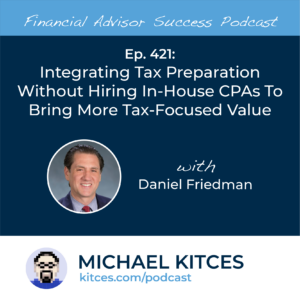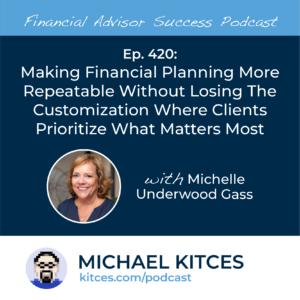Since the emergence of Artificial Intelligence (AI) in the mainstream technological landscape, conversations about which areas of the financial planning industry would be most likely impacted by AI have proliferated. These discussions have ranged from questioning whether everyone would be out of a job in five years to wondering if anything of substance would change at all. However, as the public’s understanding of AI has developed, the common consensus has largely shifted to the understanding that while processes may change, the expertise and human connection offered by specialists like financial advisors will be hard to replace. In fact, AI currently seems most likely to develop into a tool that advisors can use in many parts of practice. Which, in turn, poses the question – where can AI be most effectively used as a way for advisors to leverage their time and creativity?
In the 156th episode of Kitces & Carl, Michael Kitces and client communication expert Carl Richards discuss how they use AI tools such as ChatGPT to expedite their creative and strategic processes – and how to ‘ask’ ChatGPT better questions to get more effective and relevant answers.
Perhaps one of the most impressive capabilities of programs like ChatGPT lies in their ability to serve as brainstorming partners. To use them effectively, it can be helpful to assign ChatGPT a role (e.g., “You are my executive producer” or “You are a marketing director”) and define a clear objective. Providing sample documents or links to sources for tone or substance may be helpful. For example, advisors can attach their typical “first prospect meeting” agenda, give ChatGPT the role of business development coach, and ask for feedback and what to do differently.
That being said, a common frustration when using ChatGPT or similar programs for brainstorming is that the first responses may not be exactly what is hoped for. Rather than expecting a perfect ‘call and response’, the process can be approached more as an iterative dialogue. Sharing initial thoughts, providing feedback, and curating further – such as asking variations of “I really like [this idea]; can you tell me more about it for an audience of [specific type of client]…?” – can guide ChatGPT toward more tailored results. The advisor and AI can then collaborate further to create a stronger and more relevant offering. Additionally, many AI programs now ‘remember’ what was asked of them across sessions, making it easier to build on previous conversations and reach increasingly insightful responses over time!
The key point is that with some patience and guidance, ChatGPT can be a powerful tool for enhancing many aspects of an advisory firm’s operations. Whether it’s used to help with marketing, drafting email responses, summarizing content, reviewing data analyses, or even providing feedback on client surveys, the potential applications are vast. Ultimately, the only true limitation of AI’s potential is ‘just’ a question of imagination!




